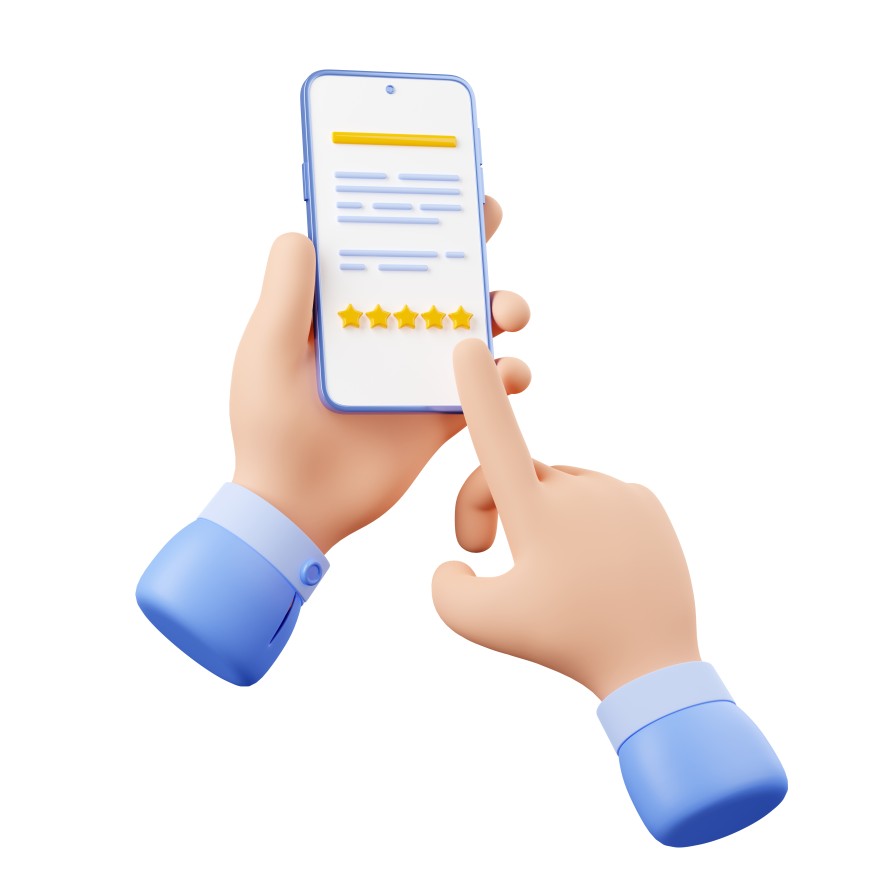
Your personal brand is your secret weapon in today’s fast-paced professional world. It’s time to take control of your narrative and strategically position yourself for success in your chosen field.
This guide will take you through 11 practical steps on how to brand yourself professionally. From crafting a compelling personal narrative to leveraging digital platforms for visibility, each step is designed to help you stand out in a competitive professional world and showcase your unique strengths.
Ready to brand yourself like a pro? Let’s dive in!
What is Personal Branding?
Personal branding is like creating your own superpower in the professional world. It is the intentional and strategic process of creating and managing a distinct identity for oneself. It involves showcasing your unique strengths, skills, values, and personality traits to differentiate yourself from others.
Similar to how companies build brands to establish their identity and appeal to their target audience, individuals can craft a personal brand to build credibility and enhance their visibility in their chosen field. It’s all about being memorable, building trust, and boosting your career by letting the world know what makes you uniquely you.
How Can Personal Branding Help You Professionally?
According to an article published in Harvard Business Review, every individual is a brand in today’s world. To make your way in the world, you must develop your brand and get comfortable marketing it. Personal branding can be a game-changer for your professional journey in several ways:
- Opportunity Magnet: A strong personal brand can attract new career opportunities. Employers and recruiters often seek individuals with a compelling and authentic personal brand that aligns with their organization’s values and goals. For example- You are a project manager renowned for your insightful project management blog. Now, anyone who comes across your profile will remember you for your blogs and might drop your name in the right rooms. This would attract a lot of opportunities for your brand.
- Network Amplifier: Building a personal brand helps you stand out in a crowd, making networking more effective. It paves the way for meaningful connections and collaborations, opening doors to mentors, colleagues, and potential collaborators. For instance, you are a financial consultant with a distinctive personal brand. You establish a notable online presence through active participation in industry conferences and consistent sharing of financial insights on your social media profile. Professionals will recognize you for your online contributions at your next finance event. It will serve as a conversation starter and amplify your value in the networking mixers.

- Trust Rocket: A well-crafted personal brand enhances your credibility. It communicates reliability and expertise, making you the go-to person in your professional circle. For example, you are a software developer known for sharing coding tutorials and tips on your blog. As your personal brand gains traction, colleagues and industry peers will recognize you as a reliable source of expertise.
- Career Turbocharger: A strong personal brand positions you for career advancement. When decision-makers recognize your expertise and associate it with a positive and memorable personal brand, you become a natural choice for promotions and leadership roles. It’s not just about climbing the ladder; it’s about zooming up the career highway with confidence and flair. For example- As a marketing professional, you worked on a personal brand highlighting creativity and strategic thinking. Your industry’s decision-makers will notice and remember that when any new opportunity arises. Ultimately, your brand can open many doors for you in today’s competitive job market.
- Standout Factor: In a sea of professionals, your personal brand is the beacon that makes you stand out. It sets you apart from the competition and can be the deciding factor that makes you the preferred choice among candidates with similar qualifications. For example, we have a lot of podcasters in today’s professional space. However, Joe Rogan, an American UFC podcaster, comedian, and actor, is someone we all know about. And it’s all because of his personal brand.
How to Brand Yourself Professionally
Effective personal branding can open doors to opportunities, strengthen professional relationships, and contribute to long-term success in one’s career. Here are 11 practical and actionable tips for branding yourself professionally-
1. Self-Reflect
Self-discovery isn’t just a personal enlightenment journey; it’s the birthplace of your personal brand. Today’s professional careers have moved away from long-term employment in a single company. A paper published in the European Research Studies Journal concludes that focusing on professional activities that help your personal brand is extremely important. The journal is a refereed publication and is designed to cover a wide variety of topics in the fields of Business and Economics.

Your brand isn’t just a logo or a snazzy tagline; it’s the essence of who you are, what you value, and why others should care. So, let’s make a self-reflection splash and uncover the treasures that will shape a personal brand that is uniquely yours-
- Core Values: Start by uncovering your core values, such as integrity, accountability, empathy, and so on. In a professional context, this could mean transparent dealings. This will help you build lasting client relationships and can also position you as an industry leader.
- Unique Strengths: Identify the strengths that make you a standout professional. If you’re in project management and your knack for problem-solving is your forte, make it the hero of your personal brand story.
- Passion-Driven Professionalism: Explore what aspects of your work genuinely excite you. For example, if you’re a marketing professional, maybe it’s the creative campaign strategies that lighten the spark in you. Make this passion a focal point.
Dive deep into who you are, what you value, and what sets you apart. Your personal brand starts with knowing yourself.
2. Define your Brand Essence
Building a house without a strong foundation is a shaky endeavor. Similarly, crafting your personal brand without defining your brand essence is like constructing a skyscraper on the sand. Your brand essence is the DNA that makes you uniquely you. Let’s delve into how to define this essence and fortify the foundation of your personal brand-
- Mission Statement: Craft a concise mission statement encapsulating your values, strengths, and passions. Think of it as your brand’s North Star. And be very genuine and authentic with this. Monica Lin, millennial influencer and head of marketing at Popular Demand, says, “People can see right through a disingenuous act.” Your mission statement should be only and only yours.
- Personality Persona: Define the personality you want your brand to exude. Whether it’s playful, authoritative, or empathetic, align your communication style with your chosen persona. For example, if you want to be a career coach, your brand essence will be to look approachable, have a warm and friendly online presence, and be relatable.
Your brand essence is the foundation of your professional identity.
3. Understand your Audience
Understanding your audience is important to speak their language. It’s the art of crafting a brand that reflects your essence and resonates deeply with those you aim to connect with.
Here are a few actionable tips to help you create a magnetic connection that goes beyond a mere first impression-
- Empathy-Infused Branding: Try to picture yourself wearing your audience’s shoes. For example, if you’re a freelance graphic designer who wants to attract tech start-ups, you must understand their fast-paced culture and need for innovative visuals. Then, you must tailor your brand to reflect creativity and efficiency.
- Speak Their Language: Align your communication style with your audience’s preferences. For example- Your language should exude professionalism if your target audience is in the corporate world.
- Relevance: Highlight how your brand relates to the audience’s needs and challenges. For instance, if you’re a digital marketing specialist targeting small businesses, showcase the success stories of small businesses you’ve propelled into the digital spotlight.
Understand your target audience – whether it’s employers, clients, or collaborators. Tailor your brand to resonate with their needs and expectations.
4. Craft your Story
In the realm of personal branding, storytelling is the magic wand that transforms a list of achievements into a captivating journey. Crafting your story is about more than just recounting professional milestones; it’s the art of creating a narrative that resonates, connecting with your audience on a deeper level.
Allen Gannett, chief strategy officer at Skyword and author of The Creative Curve, explains it best:” The most effective personal branding strategy these days is to build a true narrative – single character monologues are boring in Tinseltown, and even more boring for your personal brand.”
Let’s uncover the secrets to weaving a compelling story that helps you forward-
- Authenticity: Start with authenticity. Your story should reflect the real you. For example, you are a project manager who openly shares challenges in handling complex projects. Doing this will help people find you relatable and humanize your journey for them.
- Challenges and Resilience: Showcase moments of growth and transformation. Address challenges and emphasize the methods that got you through. Be true to yourself and your work. Doing this will position you as someone who learns and evolves.
- Future Goals: Conclude your story by outlining your future goals and aspirations. This forward-looking approach inspires trust and attracts projects aligned with your visionary goals.
Narratives stick. Create a compelling story that weaves together your professional journey, showcasing your growth, challenges conquered, and goals. Social media amplifies your narrative, allowing you to connect with your audience more deeply. It enables you to share your achievements and the human side of your journey. You should check out 27 B2B Social Media Content Ideas To Drive Success All Year Long, a resource that complements the art of storytelling on social platforms.
5. Build a Consistent Online Presence
Your online presence is often the first impression you make. Building a consistent online brand is not just about having a LinkedIn profile; it’s about curating a digital persona that resonates with your professional identity.
Let’s uncover the essentials of optimizing your online presence, focusing on platforms like LinkedIn, ensuring a cohesive and compelling portrayal of your personal brand-
- LinkedIn- Your Professional Playground: Treat your LinkedIn profile as the centerpiece of your online presence. Ensure your profile picture is professional, your headline accurately captures your expertise, and your summary provides a snapshot of your journey.
- Content Consistency is Key: Maintain a consistent tone and style across your professional platforms. Whether it’s LinkedIn, Twitter, or your personal blog, ensure your content reflects your brand essence. You can get help from our Comprehensive Guide on How to Create a Social Media Content Calendar + Template to organize your online content efficiently.
- Engage Authentically: Don’t just broadcast; engage authentically. Respond to comments, share relevant content, and participate in industry conversations.

These tips will help you create a compelling online brand that reflects your professional identity and fosters meaningful connections and opportunities.
6. Make Content Maestro Moves
Being a content maestro is your ticket to the spotlight. Whether it’s through blogs, vlogs, or podcasts, sharing valuable content is not just about showcasing your knowledge; it’s a strategic move to position yourself as a thought leader in your industry.
Let’s explore the art of making content maestro moves that elevate your personal brand to a position of influence-
- Unique Voice: Identify your unique voice before diving into content creation. What perspective or insights do you bring to the table? For example, you are a marketing professional who infuses your content with a humorous twist while making blogs and videos. This unique voice will help you entertain the audience and establish you as a distinctive thought leader.
- Consistent Publishing Schedule: Whether it’s weekly blog posts, monthly vlogs, or bi-weekly podcast episodes, consistency builds anticipation and trust.

- Address Industry Challenges: Tailor your content to address industry challenges. Be the problem-solver. For instance, if you’re a project manager, share tips on overcoming common project hurdles. Brand yourself as a go-to resource for project management insights and solutions.
In the content maestro arena, it’s not just about creating content; it’s about creating a narrative that resonates. Position yourself as a thought leader.
7. Strategize your Networking
Networking isn’t just a social activity – it’s a strategic move. Your network becomes a living extension of your personal brand, reflecting who you know and how you engage and contribute. Here are a few actionable tips to ensure that your connections echo the essence of your personal brand-
- Define Networking Goals: Before stepping into the networking area, define your goals. Are you looking for mentorship, seeking collaboration opportunities, or aiming to share your expertise? Once you’ve figured this out, you should check out these 13 Effective Ways to Build Solid Networking Skills.
- Quality over Quantity: It’s not about collecting business cards or amassing LinkedIn connections; it’s about cultivating meaningful relationships. For example, you are a financial consultant who builds deep connections within your niche. This quality-over-quantity approach will strengthen your network and position you as a trusted advisor in financial circles. To better understand how to plan your networking sessions, check out our article 29 Dynamic Networking Event Ideas to Make a Lasting Impression.
- Reciprocity Matters: Networking is a two-way street. Be ready to offer help and insights as much as you seek them. For example- If you are a software developer, then actively share coding tips and solutions within your network. This reciprocity will characterize you as a valuable resource within the professional community.
Strategic networking is about intentionality and building relationships that align with your personal brand.
8. Level up your Skills
Continuous learning isn’t just a checkbox; it’s a dynamic element of your personal brand. The commitment to acquiring new skills and certifications ensures you stay relevant and sends a powerful message – that you are dedicated to your own evolution. Let’s explore how you can level up your skills-
- Identify Skill Gaps: Identify areas where you can enhance your skills. This could be mastering a new programming language, delving into data analytics, or refining your project management techniques.
- Obtain Certifications: Treat certifications as milestones in your professional journey. Leverage the plethora of online learning platforms. Platforms like Coursera, LinkedIn Learning, or Udacity offer courses across diverse domains. Whether it’s obtaining a project management certification or becoming a certified digital marketer, these tangible achievements become badges of expertise.
- Document Your Learning Journey: Share your learning journey on professional platforms. Write articles, create posts, or even start a blog documenting your experiences with new skills and certifications.
Stay relevant by acquiring new skills and certifications. Show your audience you’re committed to growth.
9. Use Visual Branding Elements
Visual elements are the silent storytellers of your personal brand. These elements, whether in the form of a logo or a recognizable profile picture, add a layer of distinction to your personal brand. Let’s delve into the importance of these visual elements and how they contribute to creating a memorable brand-
- Distinctive Logo: Design a professional logo that encapsulates the essence of your personal brand. Think of the Nike swoosh or the Apple bitten apple – simple yet powerful symbols that instantly evoke their respective brands. The Nike swoosh conveys a sense of movement, speed, and aspiration, aligning with Nike’s brand of athleticism and innovation.
On the other hand, the Apple bitten apple symbolizes creativity, knowledge, and breaking traditional norms, reflecting Apple’s commitment to cutting-edge technology and user-friendly design. Your logo should similarly reflect your personal brand’s core values and convey a clear message about who you are and what you stand for.
- Profile Picture: Your profile picture is your digital handshake. Ensure it’s consistent across professional platforms. The same professional image reinforces brand continuity, whether it’s LinkedIn, Twitter, or your personal blog.
- Color Palette and Typography: Establish a consistent color palette and typography for your brand. These visual elements create a harmonious brand identity when applied uniformly across your website, business cards, and presentations.

- Visual Storytelling: Leverage visual storytelling through imagery. Share photos or graphics that align with your brand narrative. For example, as a software developer, you can use images of coding setups and snippets in your blog posts. This will visually reinforce your expertise and passion for programming, contributing to a compelling visual storytelling aspect of your brand.
Your aim is to create a visually appealing brand that is instantly recognizable and etches itself into your audience’s memory.
10. Collect Testimonials and Endorsements
In the symphony of personal branding, sometimes the most compelling notes come from the chorus of others. Testimonials and endorsements serve as the harmonious chords that resonate, validating your expertise and character. Letting others sing your praises isn’t just a gesture of humility; it’s a strategic move to amplify the resonance of your personal brand. For example- Aaron Orendorff, editor-in-chief at Shopify Plus, tells his personal story through lively videos and the occasional bunny co-host or two, and his audience remembers.
Let’s explore the significance of collecting these endorsements and how they contribute to your professional identity-
- Strategically Seek Testimonials: Proactively seek testimonials from colleagues, clients, or mentors who can vouch for your skills and character.

- Highlight Specific Achievements: When requesting testimonials, guide others to highlight specific achievements or aspects of your professional persona. For example, if you’re a financial consultant, ask clients to emphasize how your strategic financial advice led to tangible business growth. These specific endorsements become powerful testimonials for your personal brand.
- Diversify Endorsements: Seek endorsements across various aspects of your professional life. Whether it’s project management skills, coding expertise, or leadership qualities, a diverse range of endorsements paints a comprehensive picture of your capabilities.
- Display Testimonials Strategically: Once collected, strategically display testimonials on your website, LinkedIn profile, or other professional platforms. You can also create your own portfolio website and display these testimonials there.
Let others sing your praises. Collecting testimonials isn’t about vanity; it’s about building a chorus of credibility around your personal brand.
11. Adapt and Evolve
Stagnation is the surest path to irrelevance. Your personal brand isn’t a static entity; it’s a living, breathing representation of your professional identity. Jo Miller, CEO of Be Leaderly, explains that your personal brand needs to evolve at certain points in your career, or it will hold you back.
To thrive amidst the ever-evolving landscape, the mantra is simple – adapt and evolve. Here are a few steps to implement this-
- Industry Trends: Regularly update yourself on the latest industry trends. Attend conferences, read industry publications, and engage in online discussions.
- New Skills and Technologies: The professional landscape often introduces new skills and technologies. Embrace these changes by acquiring new skills or adapting existing ones. For example- if you are a project manager, adding Agile project management methodologies to your skill set will show your adaptability and commitment to staying at the forefront.
- Brand Messaging: Refine your brand messaging at regular intervals. Ensure that it reflects your current professional status and resonates with your target audience. For example, if you are a software developer, you must adjust your brand messaging to emphasize your expertise in emerging programming languages, reflecting the evolving demands of your industry.
- Feedback and Evaluate: Actively seek feedback from peers, mentors, or even your audience. Use their insights to evaluate your personal brand’s effectiveness.
The professional landscape evolves, and so should your brand. Regularly reassess and tweak your personal brand to stay relevant and fresh.
Key Takeaway
Embarking on the journey to brand yourself professionally is not a one-time endeavor; it’s a continuous process of self-discovery, adaptation, and growth. In these 11 practical steps, we’ve explored the art of crafting a personal brand that makes you uniquely you! These steps resonate with authenticity, captivate your audience, and help you evolve in a dynamic professional landscape.
In this ongoing journey of personal branding, remember the steps may be practical, but the impact is profound. It shapes your professional narrative and how you are perceived in the world.
So, go forth – you are a story worth telling and a brand worth remembering. Also, if you want to stay abreast with all the latest information about the event industry, visit our site— Eventible.




Comments are closed.